1 - 5 of 5 records
Partie Septentrionale de l'Empire Francais (1812)
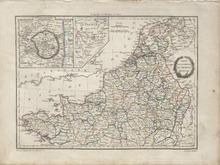
Description: Detailed single page historical copper engraved map of Northern France. The map also covers the Netherlands, parts of Germany, and Switzerland, most of which belonged to the French Empire at the time. The map shows several geographic details on cities, towns, rivers, mountains, and islands. The map includes two inset maps to top left quadrant entitled, "Environs de Paris: and "Holstein". The map features a vignette incorporating the title. Regions shown: Finisterre (Finistère), Morbihan, Loire Inferieure (Loire-Atlantique), Mayenne, Maine et Loire (Maine-et-Loire), Sarthe, Ille et Vilaine (Ille-et-Vilaine), Indre et Loire (Indre-et-Loire), Loir et Cher (Loir-et-Cher), Loiret, Cher, Yonne, Nievre (Nièvre), Cote D'Or (Côte-d'Or), Cotes du Nord, Manche, Orne, Calvados, Eure et Loir, Eure, Seine Inferieure, Seine et Oise, Seine, Seine et Marne, Oise, Aisne, Somme, Pas de Calais, Aube, Haute Marne, Haute Saone, Doubs, Haut Rhin, Vosge, Bas Rhin, Meurthe, Moselle, Meuse, Marne, Ardennes, Forets, Sambre et Meuse, Ourte, Sarre, Mont Tonnerre, Rhin et Moselle, Nord, Lys, Jemappes, Dyle, Escaut, Bouches de L'Escaut, Deux Nethes, Bou de la Meuse, Meuse Inferieure, Oer, Zuiderzee, Yssel Superieur, Bouches du Rhin, Lippe, Frise, Ems Occide, Ems Oriental, Ems Superieur, Bouches du Wesser, and Bouches de L'Elbe. Cities shown: Finisterre (Finistère): Concarneau, Quimperle (Quimperlé), Morbihan: Roche Bernard (La Roche-Bernard), l'Orient (Lorient), Vannes, Ploermel (Ploërmel), Loire Inferieure (Loire-Atlantique): Nantes, Ancenis, and Chateaubriand (Châteaubriant). Mayenne: Chateau Gontier (Château-Gontier), Maine et Loire (Maine-et-Loire): Angers, Segre (Segré), Bauge (Baugé-en-Anjou), and Saumur. Sarthe: Sable (Sablé-sur-Sarthe), la Fleche (La Flèche), S. Calais (Saint-Calais), Ille et Vilaine (Ille-et-Vilaine): Redon, Indre et Loire (Indre-et-Loire): Chateau Regnault (Château-Renault) and Tours. Loir et Cher (Loir-et-Cher): Montdoubleau (Mondoubleau), Vendome (Vendôme), Blois, and Romorantin (Romorantin-Lanthenay). Loiret: Beaugency, Meun (Meung-sur-Loire/Meung), Orleans (Orléans), Sully (Sully-sur-Loire), Briare, Gien, Chateau Renard (Château-Renard), Montargis, Cher: Sancerre. Yonne: S. Fargeau (Saint-Fargeau), S. Sauveur (Saint-Sauveur-en-Puisaye), Nievre (Nièvre): Cosne (Cosne-Cours-sur-Loire) and Clamecy. Cote D'Or (Côte-d'Or): Semur (Semur-en-Auxois), Montbard, Chatillon (Châtillon-sur-Seine), Recey (Recey-sur-Ource), Chanceaux, and Dijon. Source publication: Atlas Complet Du Precis De la Geographie Universelle De M. Malte Brun dressee par M. Lapie Capitaine Ingenieur Geographie Pierre M. Lapie (1779-1850) and his son Alexandre Emile Lapie (1809-1850) were French cartographers and engravers active in the early part of the 19th Century. The Lapies were commissioned officers in the French army holding the ranks of Colonel and Caipitan, respectively. Alexander enjoyed the title of "First Geographer to the King", and this title appears on several of his atlases. Both father and son were exceptional engraversand fastidious cartographers. Working separately and jointly they published four important atlases, an 1811 Atlas of the French Empire (Alexander), the 1812 Atlas Classique et Universel (Pierre), the Atlas Universel de Geographie Ancienne et Modern (joint issue), and the 1848 Atlas Militaire (Alexander). They also issued many smaller maps and independent issues. All of these are products of exceptional beauty and detail. Conrad Malte-Brun (1755-1826) was an important late 18th and early 19th Century Danish/French cartographer and revolutionary. Conrad was born in Thisted, Denmark. His parents encouraged him to a career in the Church, but he instead enrolled in the University of Copenhagen. In the liberal hall of academia Conrad became an ardent supporter of the French Revolution and the ideals of a free press. Despite the harsh censorship laws of crown prince Frederick VI, Malte-Brun published numerous pamphlets criticizing the Danish government. He was finally charged with defying censorship laws in 1799 and forced to flee to Sweden and ultimately France. Along with colleague Edme Mentelle, Malte-Brun published his first cartographic work, the Geographie mathematique, physique et politique de toutes les parties du monde (6 volumes published between 1803 and 1807). Conrad went on to found Les Annales des Voyages (in 1807) and Les Annales des Voyages, de la Geographie et de l'Histoire (in 1819). He also founded the Paris Societe de Geographie. In time, Conrad became known as one of the finest French cartographers of his time.
Member of: Antiquarian Maps Collection (1603-1863)
Resource Type: cartographic
Diversche suycker-wercken; temperyngen en cerdyepyngent van colueren om te schilderen; en remedien om diversthe gebreken des mensche licchame.
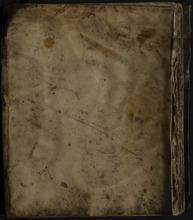
Description: Images of foldouts in the manuscript are included at the end of the book. nn"Manuscript in black ink on paper, with occasional headings or short passages of text in reddish-brown ink, ink drawings with coloured gouaches of birds, flowers, fruits, snails, insects, leaves, fish, etc. on most pages, some related to passages in the text and others largely decorative, all in a charming folk-art style. There are also a few uncoloured drawings more explicityly illustrating the text. The text and headings are neatly written in a Ducth gothic script. Contemporary p;imp vellum, sewn on 3 vellum supports, laced through the cover.nn[1], 76 II. plus 1 whole sheet folded in 4."nn"A rare and interesting example of an early 17th-century Dutch recipe book, covering not only recipes for cooking and otherwise perparing foods, but also with 3 pages (leaves 58-59) devoted to mixing and darkening artists' paints (about 25 recipes, some explicityly recommended for painting plants, fruits, skin tones and other subjects0 and 32 pages of medicinal recipes. This was the dawn of the Dutch golden age, nine years after the establishment of the Dutch East India Company (VOC) [Wikipedia: Vereenigde Oostindische Compagnie, VOC, "United East India Company"], so herbs and spices, both culinary and medicinal, and exotic pigments were beginning to reach the Netherlands from its rapidly expanding international trade. The manuscript therefrore offers a fascinating window into this changing world and the materials it provided, when Rembrandt wouldhave been five years old. The charming coloured drawings scattered through the entire manuscript, simple folk art, enliven the text and may have made use of some of the recipes for mixing pigments. The heading for the first two of the three pages devoted to paint reads, "Om coleuron te temberen om met te schilderen" (To temper (here meaning mix) colours for painting) and that for the third page reads, "Om coleuen te diepen" (To darken colours). The ingredients mentioned include white leat, red lead, vermilion, verdigris, lake, saffron, umber, azure,indigo, turnsole, potash, "orliana" and others.nnThe manuscript opens with recipes for sweet pastry: "Spaens beschuyt", "beschuyt de Naples", "Beschuyt de Milan", "Macrones", etc., followed by many recipes for conserving and preserving fruits, vegetables, nuts, herbs, etc., making them into jellies or jams, or caonying them in order to preserve them until Christmas or longer. IT also contains many recipes for pastries and pies, some with names unknown to us, and recipes to preserve fish (herring, sprat, lobster, crab). The folding sheet gives long lists of foods that can be preserved in the form of biscuit, pies, candies, jams, etc.nnThe manuscript ends (leaves 61-76) with medical recipes to treat constipation, jaundice, stomach-, tooth-, eye-, and headache, deafness, inflammation, stings and bites of snakes and other animals, a general recipe to treat plague, and recipes for plasters, elixers [sic] and balms, partly made from fruits, etc.nnThe author, Abraham de Bous (or Bouse? a letter may have been lost after the s), is wholly unkown, but the contemporary owner's inscription (see below) suggests the manuscript might have a Sephardic Jewish origin. The manuscript colates: [A]6 [chi]1 [B]2 [C]-[F]16 [G]=77 II, plus a folded sheet (37 x 30 cm). The singleton lea [chi] does not come from the same sheet as quire B and there isno evidence that it had a conjugate leaf. The first leaf (with only the year, author's name and lengthy contemporary owner's inscription) is unnumbered and leaves 4-14 were mistakenly numbered 5-15, so that 4 is omitted and leaf 15 unnumbered. The folding sheet falls betwen leaves "13" and "14".nnWith 9-line contemporary owner's inscription on the recto of the first (unnumbered) leavf beginning: "desen bouck behoert toe aen de weduwe d'heer vander planche commende van maseir olleviera...." (this book belongs to the widow of Mr. Vander Planche coming from Maser Oliveira?). Further with the ca. 1890 bookplate of Jean Baptista Vervliet, Antwerp bibliophile, author, and editor of la presse universelle. Generally in good condition, somewhat frayed and with occasional marginal chips or minor tears, the firstr and last few pages dirty and slightly stained, some of the reddish-brown ink slightly faded but still easily readable. BInding soiled and slightly curled, with a couple chips in the spine."nnMeasurements: 19.25 cm x 17 cmnnFull pdf available, https://dl.mospace.umsystem.edu/mu/islandora/object/mu%3A448935/datastream/PDF/view
Resource Type: Text
JM-164: Will there be enough to go round?
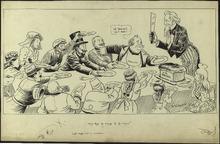
Description: This cartoon depicts Uncle Sam trying to divide "U.S. Bread" among various nations. In 1915, World War I was being fought in Europe, but the United States was maintaining a neutral position. Despite its neutrality, the United States supplied resources and arms to nations during the war. All of the countries sitting at the table are nations who lobbied for resources from the United States during the war. England is attempting to block Germany's chance of receiving resources from Uncle Sam. This is representative the attempts of the British government to limit the United States aid to Allied Powers, most often England. The United States is also sitting at the table, looking worried about sharing the beard with other nations. The United States distributing more resources than it could afford was a fear for many Americans in the 1910s. (Summary created by Mary Delano, MU History Intern, Spring 2018)
Member of: McCutcheon Editorial Cartoons - ALL (Collection)
Resource Type: Still Image
A New and Accurate Map of the Seven United Provinces Including the Dutch Netherlands
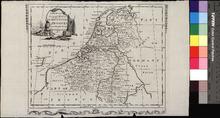
Description: Appeared in Millar's New and Universal System of Geography (1782-1785),On verso: Blank
Member of: Venable Maps
Resource Type: cartographic
A New Mape of Ye XVII Provinces of Low Germanie
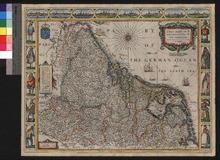
Description: Appeared in Speed's Prospect of the Most Famous Parts of the World (first published in 1627),On verso: Text: The Description of Belgia
Member of: Venable Maps
Resource Type: cartographic